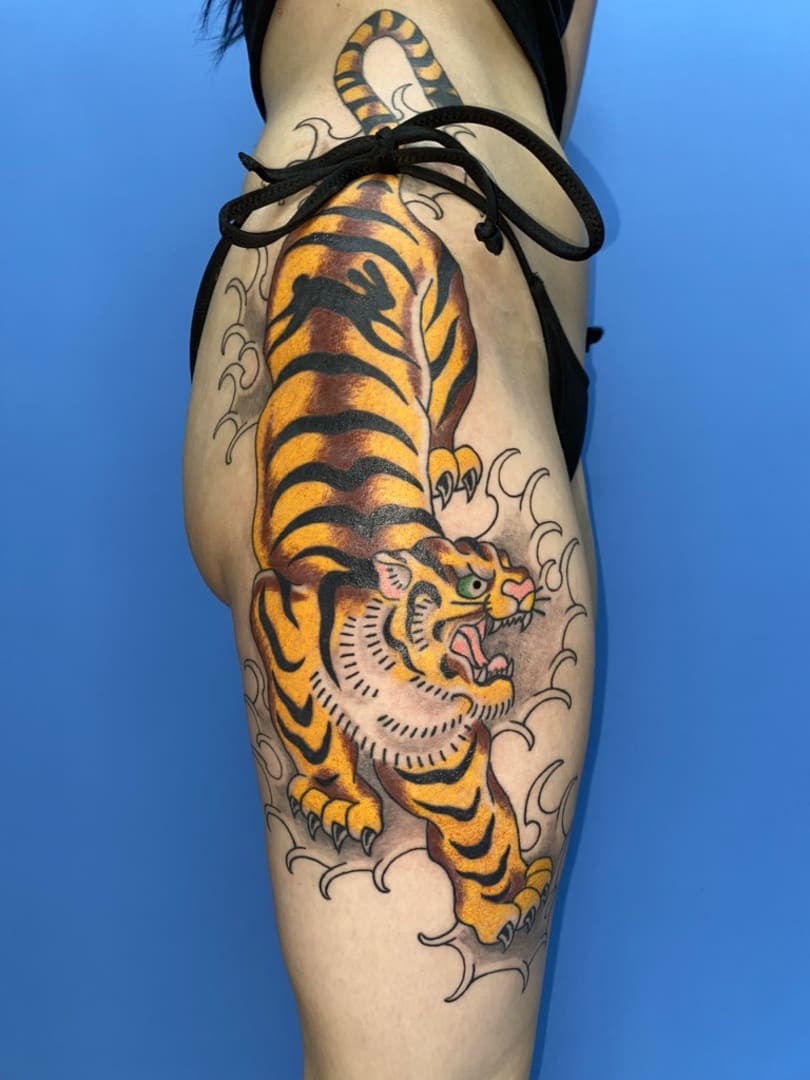raditional Japanese leg tattoos are integral components of the larger canvas known as the japanese bodysuit. They play a supportive role in holding up the japanese backpiece, which is the center of the bodysuit. Since the backpiece extends to the mid thigh, the thigh tattoos in this sense are simply an extension of the backpiece. Similarly, the front of the thigh tattoos will be an extension of the Japanese chest and ribs tattoo. From here, the tattoo may be extended to cover the rest of the legs down to a sleeve cuff at the ankle. However, the tattoo cannot begin at a cuff at the ankle and extend upwards from there, if there is no backpiece to tie these leg sleeves into.
Therefore the japanese leg sleeves will have as their prerequisite a completed upper bodysuit. All told, these tattoos extend beyond individual body parts to form a cohesive and visually stunning masterpiece that covers the entire body.
Japanese leg tattoos play a foundational role in the overall composition of the bodysuit. They assume their role at the bottom of the suit and are therefore the visual bedrock of the suit as a whole. Tattoos on the leg may include some wild card imagery, to a point, because these tattoos are not the focus of the work as a whole. Alternative imagery may be employed here as well, for example, other japanese warrior tattoos may be added to the leg when different but related warriors are pictured on the back or arms. Specific imagery is also indicated for the legs, because of the relative placement of them to the back and arms.
An experienced American tattoo artist who specializes in traditional japanese tattooing can help you to understand what these specifics might include. Japanese leg tattoos contribute to the dynamic balance and harmony of the overall design of the bodysuit, complementing other elements such as the chest, back, and arm tattoos.







